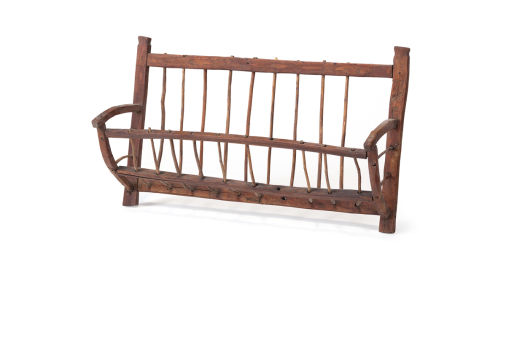
DRESSERS AND SHELVES
In the rooms in which cooking went on, shelves were used to put plates and bowls on, little cupboards in which precious items like salt and
sugar were kept, and a kitchen dresser in which pots and pans were put
away, which were on the whole untidily stacked around the fireplace.
In rural household the dresser came into use in the 1920s and 1930s in
richer households. The upper and lower parts were made of veneered
wood. The upper part often had a glass door, and was called in Slavonian
houses the staklenjak (from staklo, glass), and the lower part the ladičar. There are also simpler forms of rough workmanship with a closed upper part without glass. Such a dresser was used as kitchen furniture, meant for putting away both food and pots, and was in use from the middle of the 20th century until the present.
In rural households during the 19th and in the early 20th century various wall cupboard were in use, in which specially valuable items were placed, like salt, sugar, oil, paraffin and various kinds of valuables – prayer books, rosaries and medicines. They had locks and were kept always locked. Most often they were of simple form and were hung on the wall as an integral part of the kitchen furniture. Some little cupboards would have a shelf added on, used to put cutlery and cruets on. Richly decorated
žličnjak would be used to keep cutlery in. Among the cupboards there were various shelves for putting away pots, plates and bowls, and were called zdjeljnjak, after the word for bowl. Some shelves from Slavonia were carved, and those from Baranya were painted like the rest of the
furniture.

































